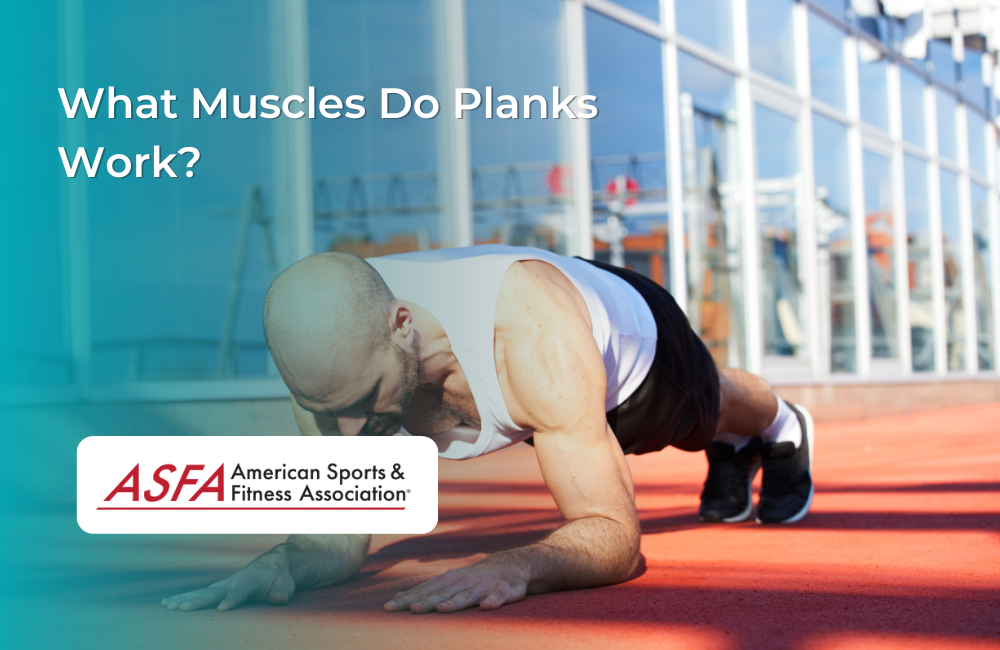Planks are a great way to build up your core strength. But in addition to your abs, planks activate many other muscles throughout the body. You'll also work your back, butt, legs, and shoulders as you hold a plank. There are three types of planks that each target different muscles: beginner, intermediate-to-advanced, and side plank variations.
Planks engage your core, meaning they work everything from your hips to your shoulders.
- The core consists of your abdominals, back, and pelvic muscles.
- A plank is a type of exercise that involves lying face down on the floor with your feet together and hands positioned beneath your shoulders.
- Planks work for these muscle groups:
- Abdominals (to keep you from curling up) -Back (to prevent arching) -Butt/glutes (to stabilize) -Legs (to hold you in place)
- There are three types of planks: prone, side and reverse.
You'll also use your back, butt, and legs.
You'll also use your back muscles to keep the plank position. Your core muscles are the center of your body, and they help you move in every direction. This type of plank is good for beginners; hold the position as long as you can. Once you can hold the position for 2 minutes, try an intermediate plank by extending one leg straight out behind you and bending at both knees (like a pushup). If this is too difficult still, don't do it!
There are three types of planks to consider, each targeting different muscles.
- Beginner plank: This basic version works your core and back muscles. To do it, get into a push-up position on the floor with your arms extended in front of you and your toes on the ground. Lower into a squat by bending at the hips and knees until they're almost touching but not quite (you should still have a straight line from head to heels). Hold this position for 30 seconds--or as long as possible--then switch sides and repeat for another 30 seconds before resting briefly in between sets if needed.
- Intermediate-to-advanced plank: Once you've mastered the beginner version above, try adding some advanced variations like forearm planks or side planks.
- Side Plank Variations: For an intense challenge that will work out those obliques (aka "love handles"), try doing side planks with one foot raised off the floor.
Beginner plank
A plank is an exercise in which you hold your body in a straight line, with only the weight of your upper body resting on the forearms or hands.
Plank position: To get into a plank position, kneel down and place both forearms on the floor with elbows under the shoulders.
Plank duration: You can hold a beginner-level plank for 30 seconds at first, then work up to 1 minute and beyond! When holding planks for longer periods of time (or if this is too easy), try placing one foot flat on the floor while keeping the other leg raised off the ground; this variation increases difficulty significantly!
Plank variations: While there are many different variations of planks that challenge different muscle groups around your core region and backside areas, these three are especially helpful if you're just getting started with strength training because they target all major muscle groups involved in performing basic exercises like squats or lunges without requiring additional equipment like weights bars etcetera.
Intermediate-to-advanced plank
Advanced Planks
When you're ready to take things up a notch, you can add more advanced plank variations to your routine. Try adding planks with one leg raised or hold the top of a push-up position for 30 seconds. You can also try doing full push-ups from your knees if that feels comfortable and do three sets of eight reps each day. This will help strengthen your core while improving balance and coordination as well as building upper body strength in the shoulders, arms, and chest muscles (pecs).
Side plank variations
- Side plank: This is the traditional version of a side plank, where you hold yourself up on one hand and foot.
- Side plank with leg lift: Raise your top leg up toward the ceiling and lower it back down, keeping your body in a straight line throughout. You can also do this while alternating sides (right leg up then left leg up).
- Side plank with arm raise: Raise one arm off of the ground at a time, keeping them straight but not locked out at all times during this exercise. It's best if they're pointed towards the ceiling or sky when they are lifted off of their respective sides of each rep performed on that side!
- Side plank with rotation: As you hold yourself up in an upright position using both hands on one side and/or both feet planted firmly against each other directly underneath them so as not to fall over from being too far away from the balance point; slowly rotate around until facing 180 degrees away from starting position (I'm talking about turning around completely) then repeat the same process going back towards original starting point after completing full rotation cycle has been completed twice."
A strong core is important for almost every activity you do.
Your core muscles are the foundation of your body. They help you maintain balance, posture, and movement in almost every activity you do. A strong core can also help prevent injuries when lifting heavy objects or performing other strenuous tasks.
The primary muscles of your core include:
- Rectus abdominis (the "six-pack" muscle)
- External obliques (on each side)
- Internal obliques (within)
Conclusion
Planks are a great way to strengthen your core, but they also work with other parts of the body. If you want to get started with planks, try the beginner variation first and then move on to more advanced variations as you progress. Remember that it's important not only to do them correctly but also regularly!





